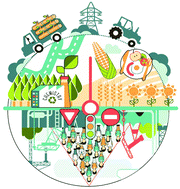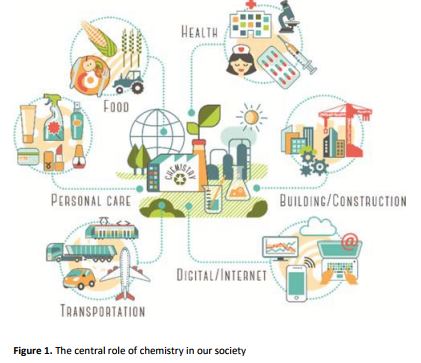Sustainable chemistry: how to produce better and more from less?
DOI: 10.1039/C7GC02006F, Perspective
This review describes the rapid evolution of chemistry in the context of a sustainable development of our society. Written in collaboration between scientists from different horizons, either from public organizations or chemical companies, we aim here at providing recommendations to accelerate the emergence of eco-designed products on the market.
Sustainable chemistry: how to produce better and more from less?
Abstract
The International Symposium on Green Chemistry (ISGC) organized in 2013, 2015 and 2017 has gathered many senior and young talented scientists from all around the world (2200 attendees in three editions), either from academia or industry. Through outstanding conferences, communications, debates, and round tables, ISGC has been the witness of the rapid evolution of chemistry in the context of a sustainable development of our societies, not only at the scientific and industrial levels but also on education, networking and societal aspects. This critical review synthesizes the different points of view and the discussions having taken place at ISGC and gives a general picture of chemistry, including few scientific disciplines such as catalysis, processes, resource management, and environmental impact, among others, within the framework of sustainable development. This critical review, co-authored by researchers from public organizations and chemical companies (small, medium and large industrial groups) provides criteria and recommendations which, in our view, should be considered from the outset of research to accelerate the emergence of eco-designed products on the market.
Conclusions
Sustainable chemistry is the only mean to generate performant products and long lasting solutions able to generate business and profit for chemical industry. Performance is the best systemic answer for customer needs and our societies. Defining sustainable chemistry is, however, far to be an easy task because chemistry is a highly dynamic system. The sustainability of a value chain is for instance directly depending on the access to energy (and above all to its origin – coal, gas, biomass…) and on the supply of raw materials. In the current economic context, it could be not so easy to predict what will be the best source of energy or raw materials for a desired product in the future. The development of predictive tools is now essential and will represent probably one of the next scientific challenges in the coming years. During the last 20 years, utilization of renewable feedstocks in chemical processes has become a strategy of growing interest but it definitely does not guarantee the establishment of a sustainable chemistry. Indeed, in some cases, it is more sustainable to produce a chemical from a fossil carbon source using decarbonized energy than the reverse. It is very important to distinguish the carbon found in the final product from the carbon content corresponding to the energy which is required the product production (going from raw materials to manufacturing, end of life, etc.). In this area, the concept of biorefinery can help to secure developments and to minimize investments in production plant by mutualizing facilities and R&D initiatives. Cooperation with local producers can also be a valuable way to implement new bio‐based products while favouring sustainable agricultural practices. Whatever the raw materials (renewable or fossil), a complete and systemic life cycle analysis of the whole chain value (from resources to manufacturing, use and end of life) must be performed because it gives us an accurate picture of the overall economic, environmental and societal performances of a product in an application for a defined market. In general, one should never forget that sustainable chemistry should help the society to produce more and better (products). Emergence of sustainable innovations on the market takes a lot of time because chemists have to reinvent chemistry. To achieve our transition to a sustainable society, we must think differently and bring together the worlds of finance, manufacturers, researchers and public authorities. The current method of funding of research and innovation is not satisfying yet because too often based on short‐term projects and with high Technology Readiness Level. Governments have to realize that this funding method slows down, and sometime also hampers, the emergence of future sustainable innovations. Evolution of regulations with the aim of banning toxic, eco‐toxic or poor biodegradable products is an important driver for sustainable innovation. It is now seen and shared as a positive sign providing opportunities to develop systemically better solutions and allowing chemical companies advocating sustainable development and products as a must to stay in the competition. As examples, ban of CFC, replacement of chlorinated or other toxic solvents, substitution of endocrine disruptors lead to better solutions for the global benefit of our societies. Improving public perception and awareness on sustainable chemistry is on the way but more efforts will be needed in the future to definitely contribute to the emergence of eco‐ designed chemicals on the market.















Sorry, the comment form is closed at this time.